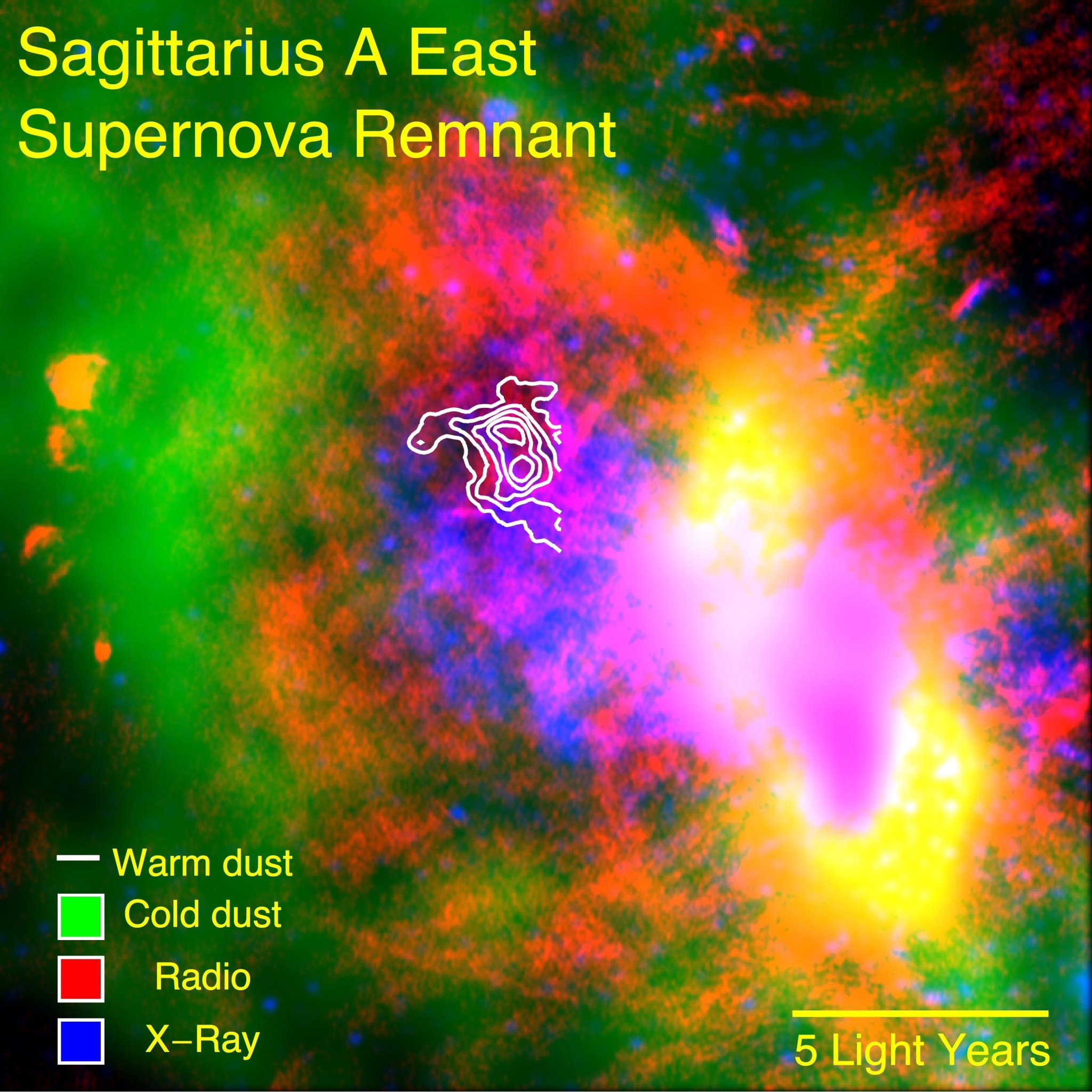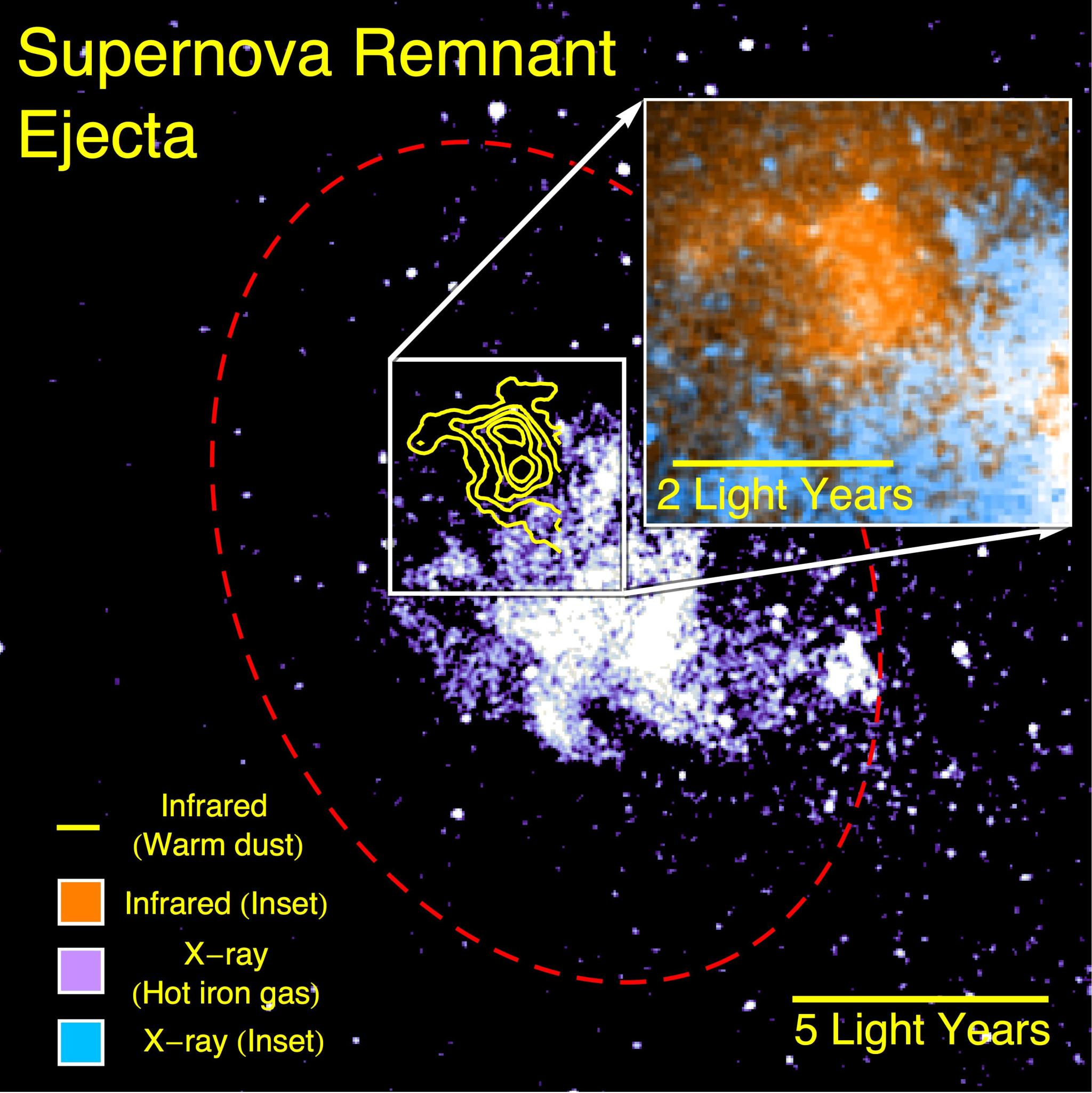
Using NASA’s Stratospheric Observatory for Infrared Astronomy (SOFIA), an international scientific team discovered that supernovae are capable of producing a substantial amount of the material from which planets like Earth can form.
These findings are published in the March 19 online issue of Science magazine.
“Our observations reveal a particular cloud produced by a supernova explosion 10,000 years ago contains enough dust to make 7,000 Earths,” said Ryan Lau of Cornell University in Ithaca, New York.
The research team, headed by Lau, used SOFIA’s airborne telescope and the Faint Object InfraRed Camera for the SOFIA Telescope, FORCAST, to take detailed infrared images of an interstellar dust cloud known as Supernova Remnant Sagittarius A East, or SNR Sgr A East.

On Aug. 5, the Visible Infrared Imaging Radiometer Suite (VIIRS) sensor on the Suomi National Polar-orbiting Partnership (NPP) satellite captured natural-color images of both Iselle and Hurricane Julio en route to Hawaii. This image is a composite of three satellite passes over the tropical Pacific Ocean in the early afternoon. Note that Iselle’s eyewall had grown less distinct; the storm had descreased to category 2 intensity. The bright shading toward the center-left of the image is sunglint, the reflection of sunlight off the water and directly back at the satellite sensor.
> More information and annotated images
> Latest storm images and data: NASA Hurricane
Image Credit: NASA image by Jeff Schmaltz, LANCE/EOSDIS Rapid Response
Caption Credit: Mike Carlowicz
The team used SOFIA data to estimate the total mass of dust in the cloud from the intensity of its emission. The investigation required measurements at long infrared wavelengths in order to peer through intervening interstellar clouds and detect the radiation emitted by the supernova dust.
Astronomers already had evidence that a supernova’s outward-moving shock wave can produce significant amounts of dust. Until now, a key question was whether the new soot- and sand-like dust particles would survive the subsequent inward “rebound” shock wave generated when the first, outward-moving shock wave collides with surrounding interstellar gas and dust.
“The dust survived the later onslaught of shock waves from the supernova explosion, and is now flowing into the interstellar medium where it can become part of the ‘seed material’ for new stars and planets,” Lau explained.
These results also reveal the possibility that the vast amount of dust observed in distant young galaxies may have been made by supernova explosions of early massive stars, as no other known mechanism could have produced nearly as much dust.
“This discovery is a special feather in the cap for SOFIA, demonstrating how observations made within our own Milky Way galaxy can bear directly on our understanding of the evolution of galaxies billions of light years away,” said Pamela Marcum, a SOFIA project scientist at Ames Research Center in Moffett Field, California.
SOFIA is a heavily modified Boeing 747 Special Performance jetliner that carries a telescope with an effective diameter of 100 inches (2.5 meters) at altitudes of 39,000 to 45,000 feet (12 to 14 km). SOFIA is a joint project of NASA and the German Aerospace Center. The aircraft observatory is based at NASA’s Armstrong Flight Research Center facility in Palmdale, California. The agency’s Ames Research Center in Moffett Field, California, is home to the SOFIA Science Center, which is managed by NASA in cooperation with the Universities Space Research Association in Columbia, Maryland, and the German SOFIA Institute at the University of Stuttgart.
For more information about SOFIA, visit:
https://www.nasa.gov/sofia
or
http://www.dlr.de/en/sofia
For information about SOFIA’s science mission and scientific instruments, visit:
http://www.sofia.usra.edu
or
http://www.dsi.uni-stuttgart.de/index.en.html
-end-
Felicia Chou
Headquarters, Washington
202-358-5241
felicia.chou@nasa.gov
Nicholas Veronico
SOFIA Science Center, Moffett Field, Calif.
650-604-4589 / 650-224-8726
nicholas.a.veronico@nasa.gov / nveronico@sofia.usra.edu
Kate K. Squires
Armstrong Flight Research Center, Edwards, Calif.
661-276-2020
kate.k.squires@nasa.gov

























